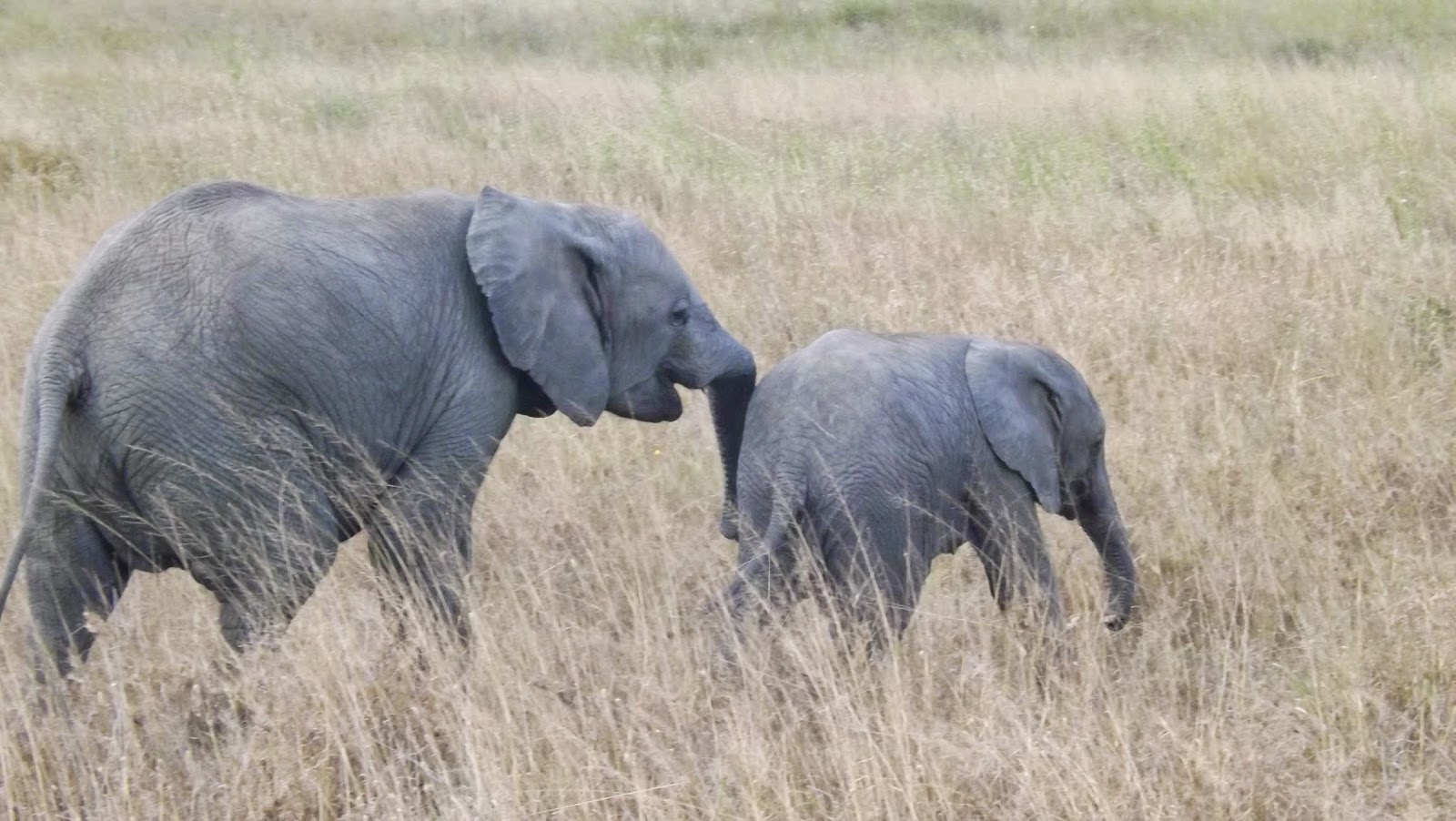The Serengeti is claimed to be the world's best known game reserve and with the many national parks and conservation areas adjoining Serengeti, it is also the best preserved and intact ecosystem on the planet. The dirt road above is emblematic of keeping the Serengeti wild. Other than the occasional safari camp or lodge there was minimal human impact on the land. Probably explains the uproar caused by Tanzania's President proposing to build a major highway through the park.
Human occupation/interaction with the Serengeti is a relatively recent event. The Masai migrated into the area about 200 years ago. White explorers didn't visit until the early 20th century. "Big game" hunters killed so many lions that by the 1920s the British established a small game preserve. Masai encroachment and wide scale hunting led the British to establish the current Park in 1950. Establishing the park included removing the Masai from within the National Park boundaries -- an action that remains controversial to this day.
What could be more African than these Umbrella acacia trees?
The Park comprises 5,700 square miles of plains, hilly savannah and woodlands; home to the largest collection of plains animals in Africa. Two million wildebeest, a half million Thompson's gazelles and a quarter million zebras call Serengeti home.
From the stop at Oldupai Gorge, we had a leisurely four hour drive to our hotel, the Serena Serengeti Lodge. It was a great day to work on our birding list and take in the scenery.
The plains are punctuated by granitic outcroppings called kopjes. Frequented by predators they provide a great vantage point to survey the surroundings -- think Lion King.
Also notice how blue the sky appears. We enjoyed some of the purest, unpolluted air we have seen in years. None of the persistent haze that seems to plague so many locations...could have something to do with the fact the nearest power plant was hundreds of miles away.
The view from this kopje is something right out of PBS' Nature series. (Double click or right click on this image and select "open in new tab" to open it to its full size.)
Serengeti is famous for its Lions, more than 3,000 are reported to inhabit the Park. We hadn't driven very far when we encountered these two young males, which our Guide Steven said he thought were two year old brothers.


Sooo sleepy...
Lions attract a crowd. The water hole is beside the main road to Seronera, Park Headquarters. Toyotas with open roof hatches offer the best combination of view and safety. Even though you are assured by your Guide that lions are not interested in anything inside these trucks, it still raises your heart rate to see one walking towards you.

This elephant family created a bit of a traffic jam...
...the adult elephants usually put themselves between the juveniles and any approaching vehicle, behavior typical of almost every animal species we observed.
...eventually they found an off-ramp and gave us a chance to pass.

Junior gets a harrassing nudge from his cousin.

Serengeti is home to over 500 species of birds , including this brilliantly colored Superb Starling.
The White Bellied Bustard normally inhabits tall grasslands where it disappears into the vegetation, like below.

This flock of Chestnut Sand Grouse take their chances drinking from the polluted hippo pool.
The Seronera River is shrinking as the rains have faltered this year, forcing the hippos into tighter quarters. They don't seem to mind the lack of sanitation.
Many species of antelope live in the Serengeti, like this Hartebeest. Named by Boer settlers, the name derives from the Dutch word for deer, "hert."
Our last sighting of the day, a very, very sated pride of lions...
...females eat after the males and cubs eat last. There is no sense of sharing between the adults and cubs, the cubs get only what the adults leave behind. Many cubs are known to starve to death, according to our Guide, Steven.
I can't believe I ate the whole thing...
Steve and Susan agree, it was a great day from start to finish...from Ngorongoro to Oldupai to Serengeti.

















No comments:
Post a Comment